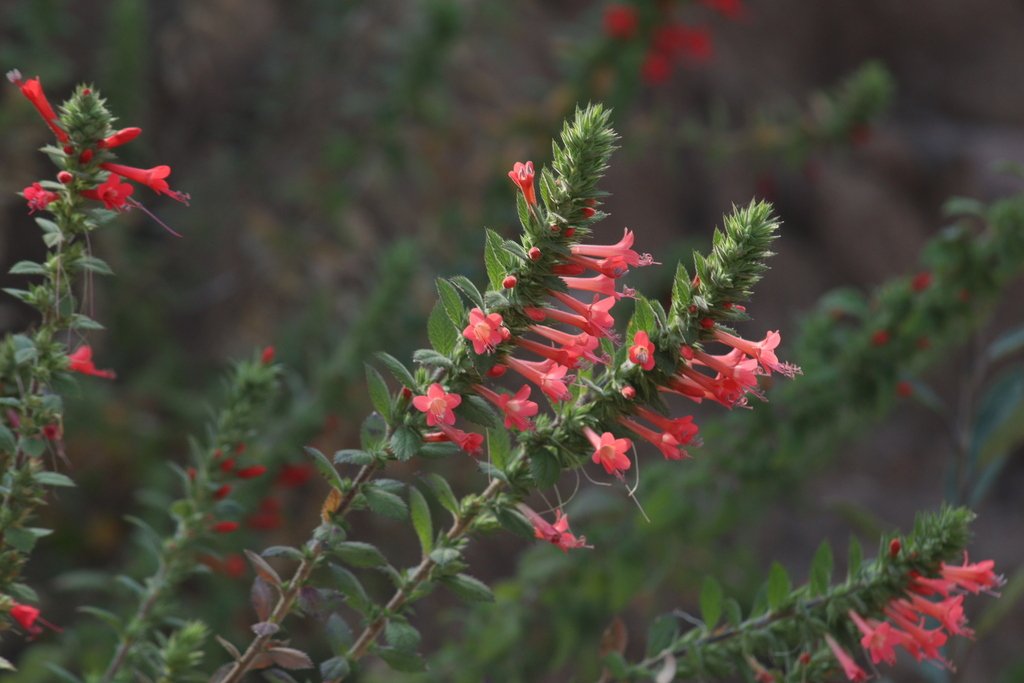Mexican False Calico
Loeselia mexicana
Family: Poliomoniaceae
Herbaceous, usually evergreen shrub, 3-5’ high and just a little less wide. Scarlet, from the monsoon into the winter, sometimes past December when little else is blooming.
Part sun, regular water, hardy to 25°F.
Used in Mexican Traditional Medicine to treat “espanto” or “susto” (fear), which is a culturally affiliated syndrome whose symptomatology comprises loss of appetite, difficulty in sleeping, and also nausea and fatigue, with a sensation of fear or risk to external stimuli.
Hummingbird pollinated.
There are 15 species of Loeselia native to the southwestern United States, Mexico, Central America, Columbia and Venezuela. The genus, Loeselia, is named for German botanist and physician Johannes Loeselius (1607-1655), a professor of medicine in Königsberg, 1639-1655. The species, mexicana, insinuates that the species is from Mexico.
In mixed pine-hardwood semitropical forest, oak woodland, often on rocky soils or cliffs throughout Mexico.
Flower detail of Loeselia mexicana, photo by Coronado Govaerts, iNaturalist
Glandular False Calico (Loeselia glandulosa) is a species that shows up in a few locations in the borderlands of Arizona in canyons and slopes at 3700-5200'. The growing needs will be very similar. Photo by Sue Carnahan, SEINET



